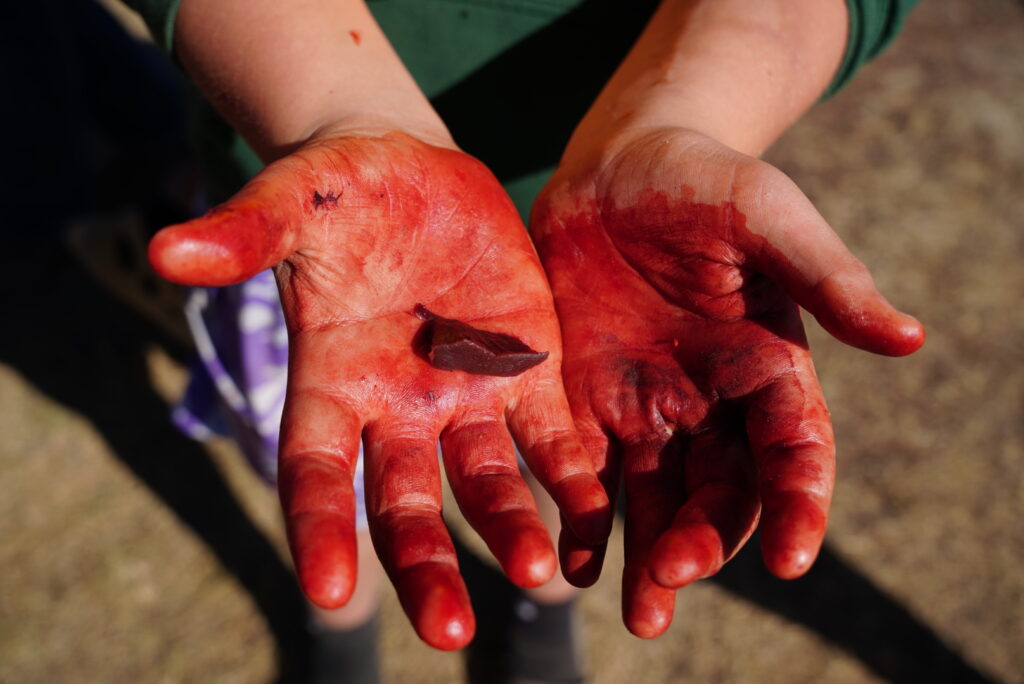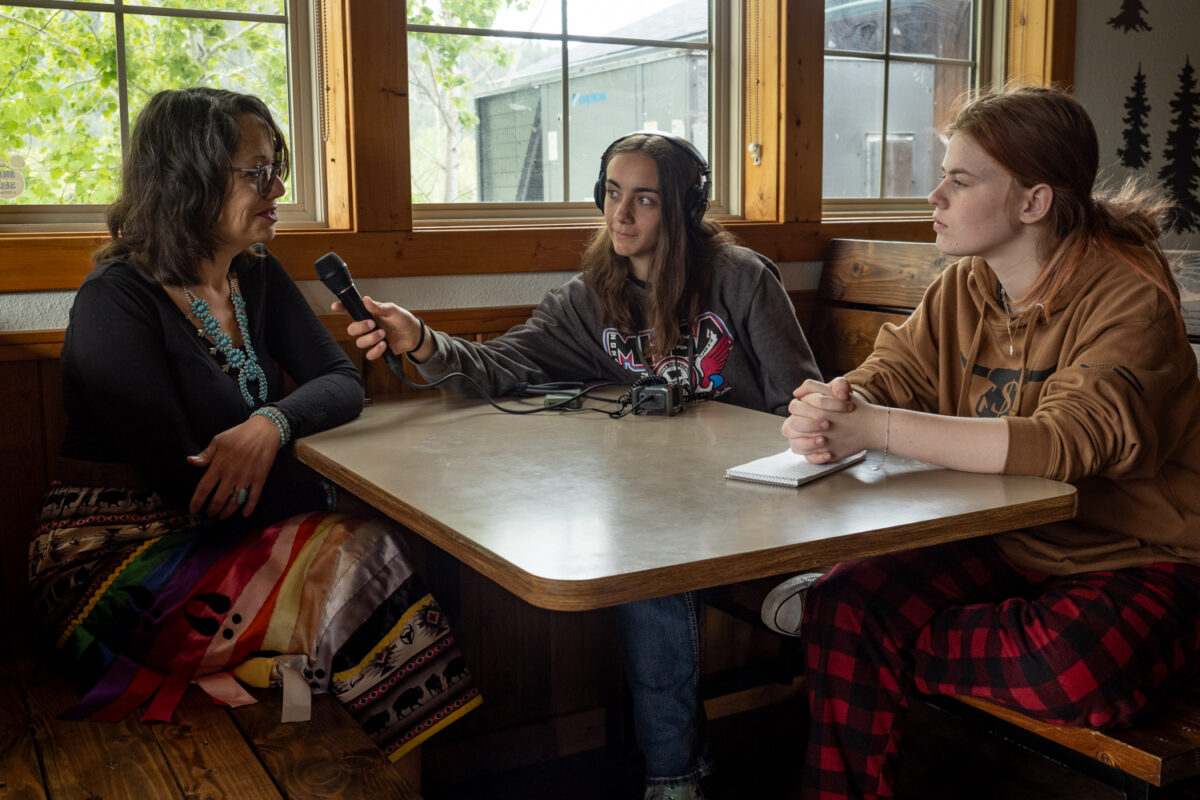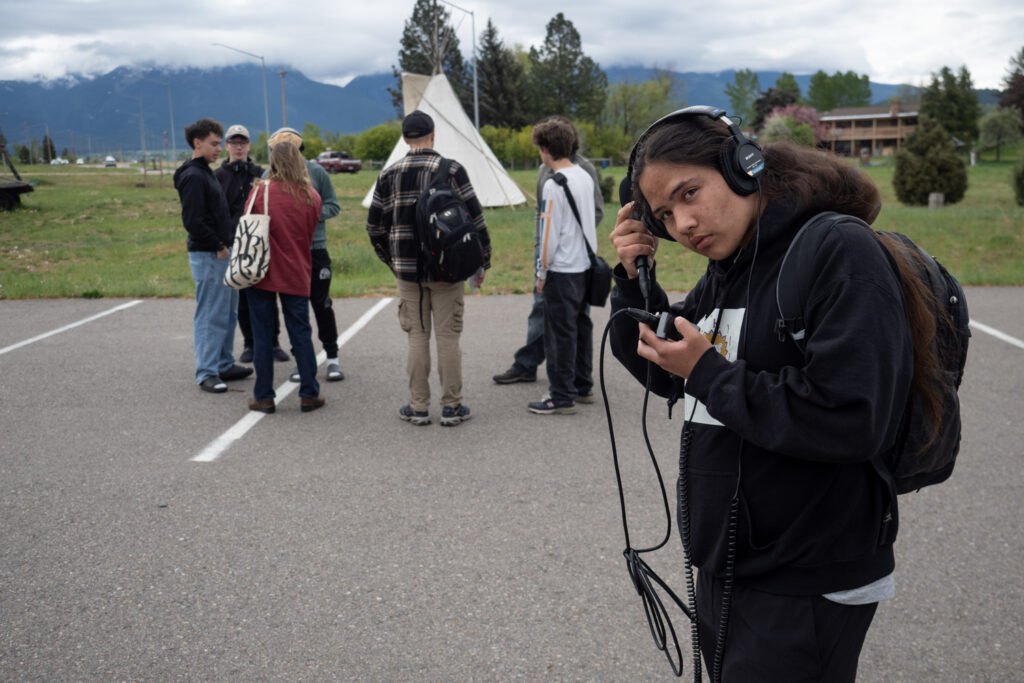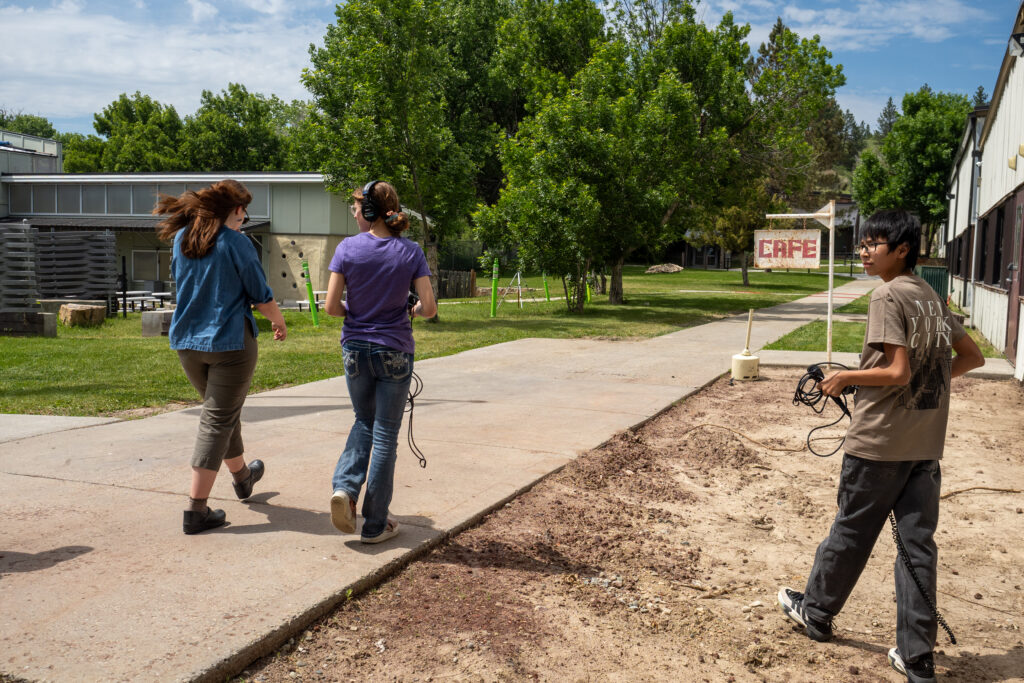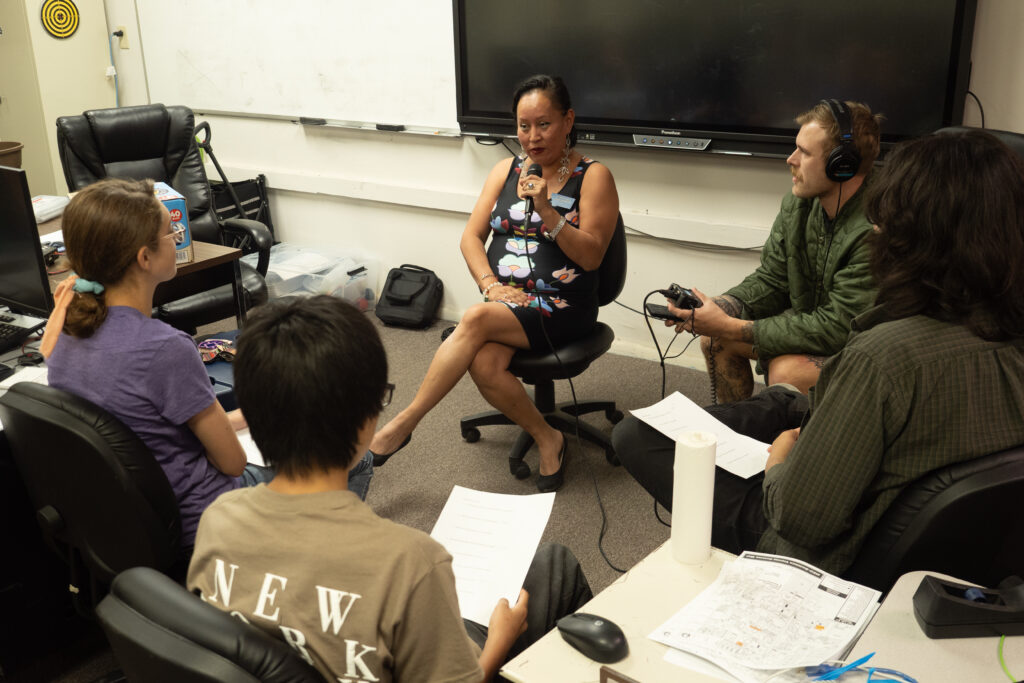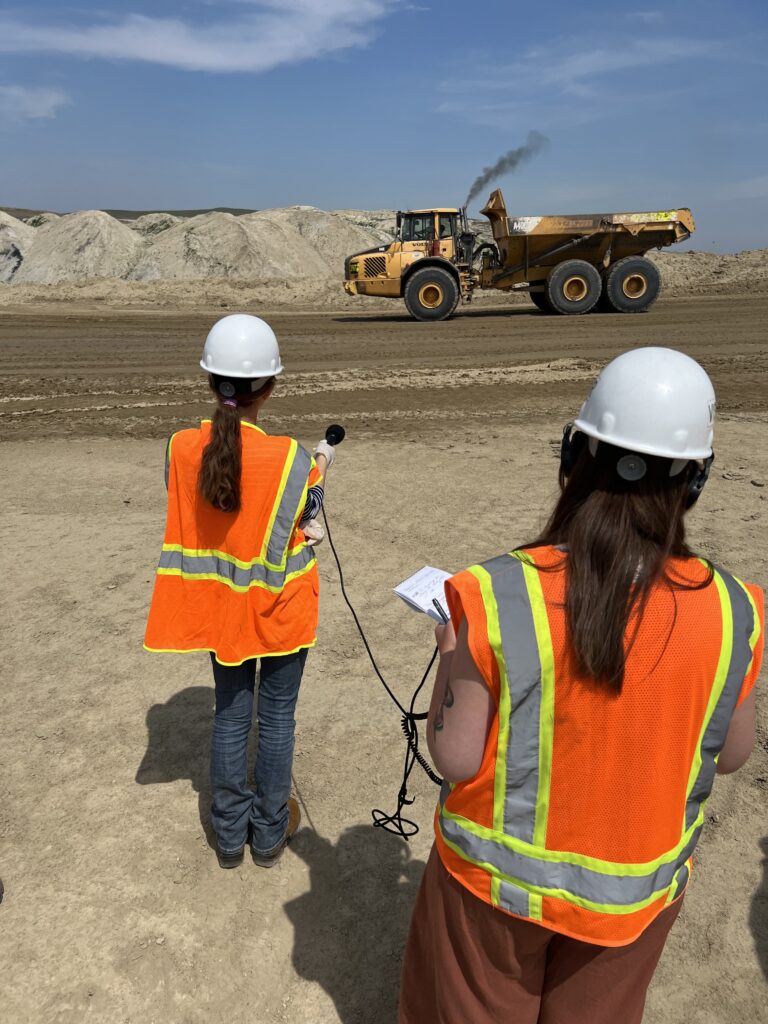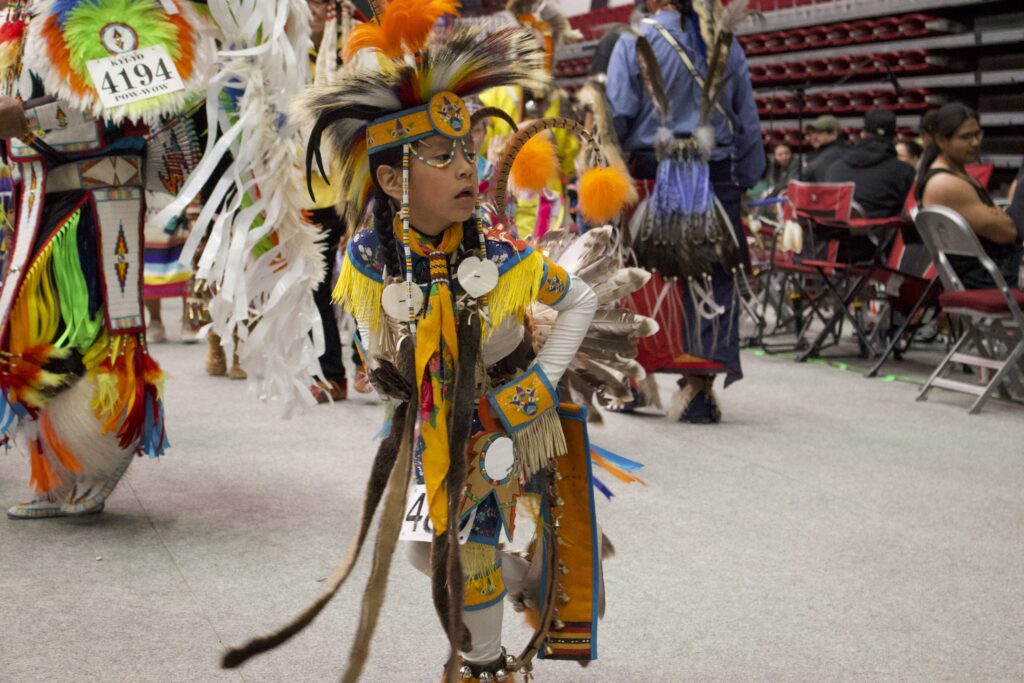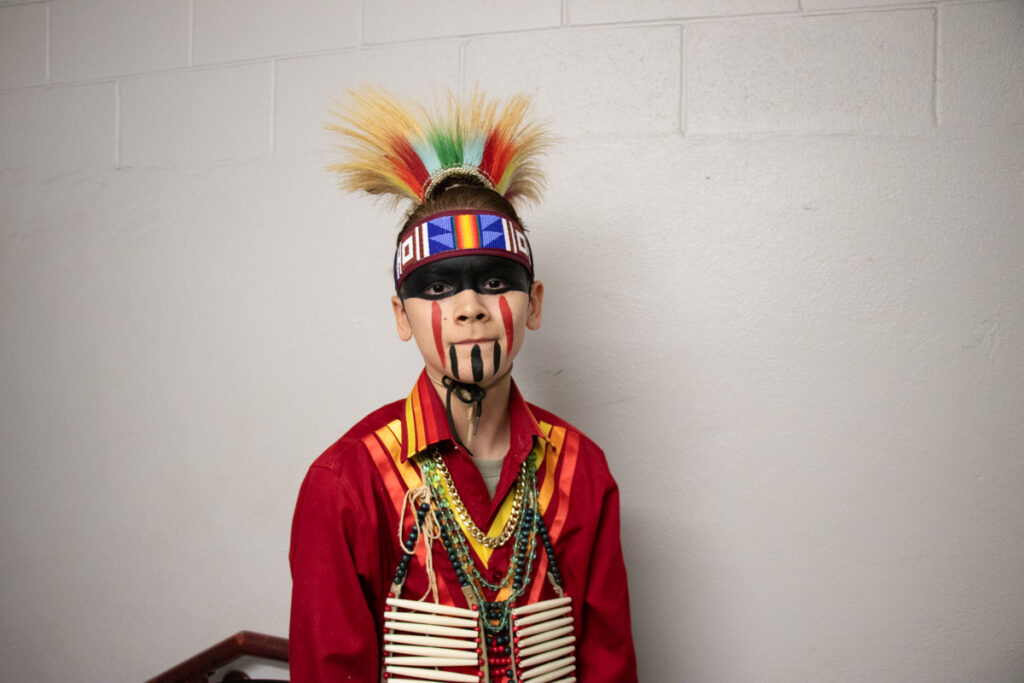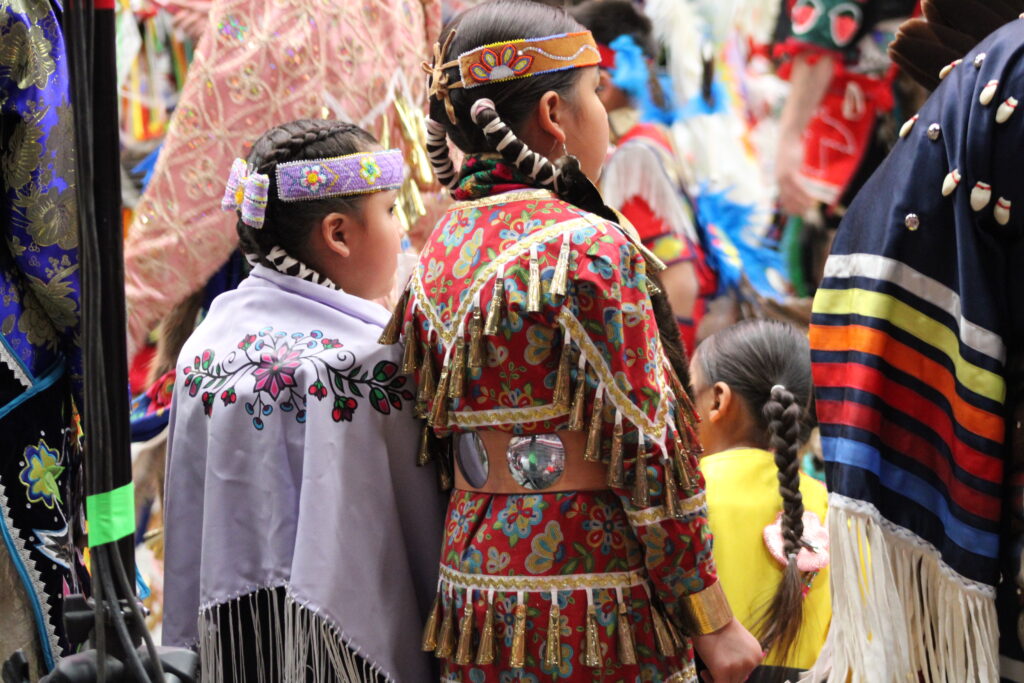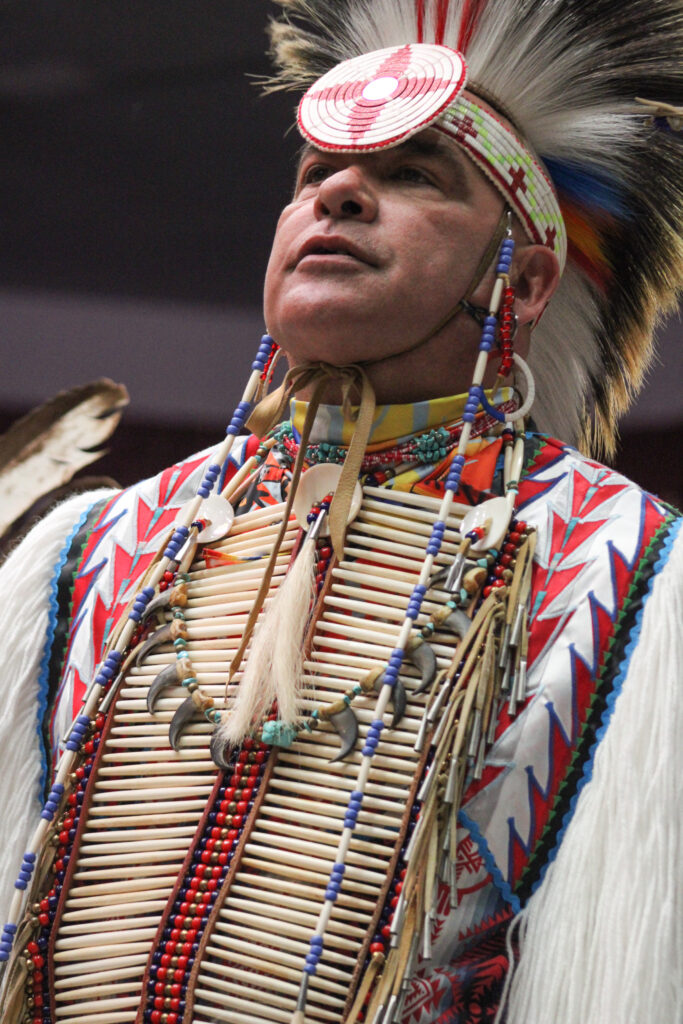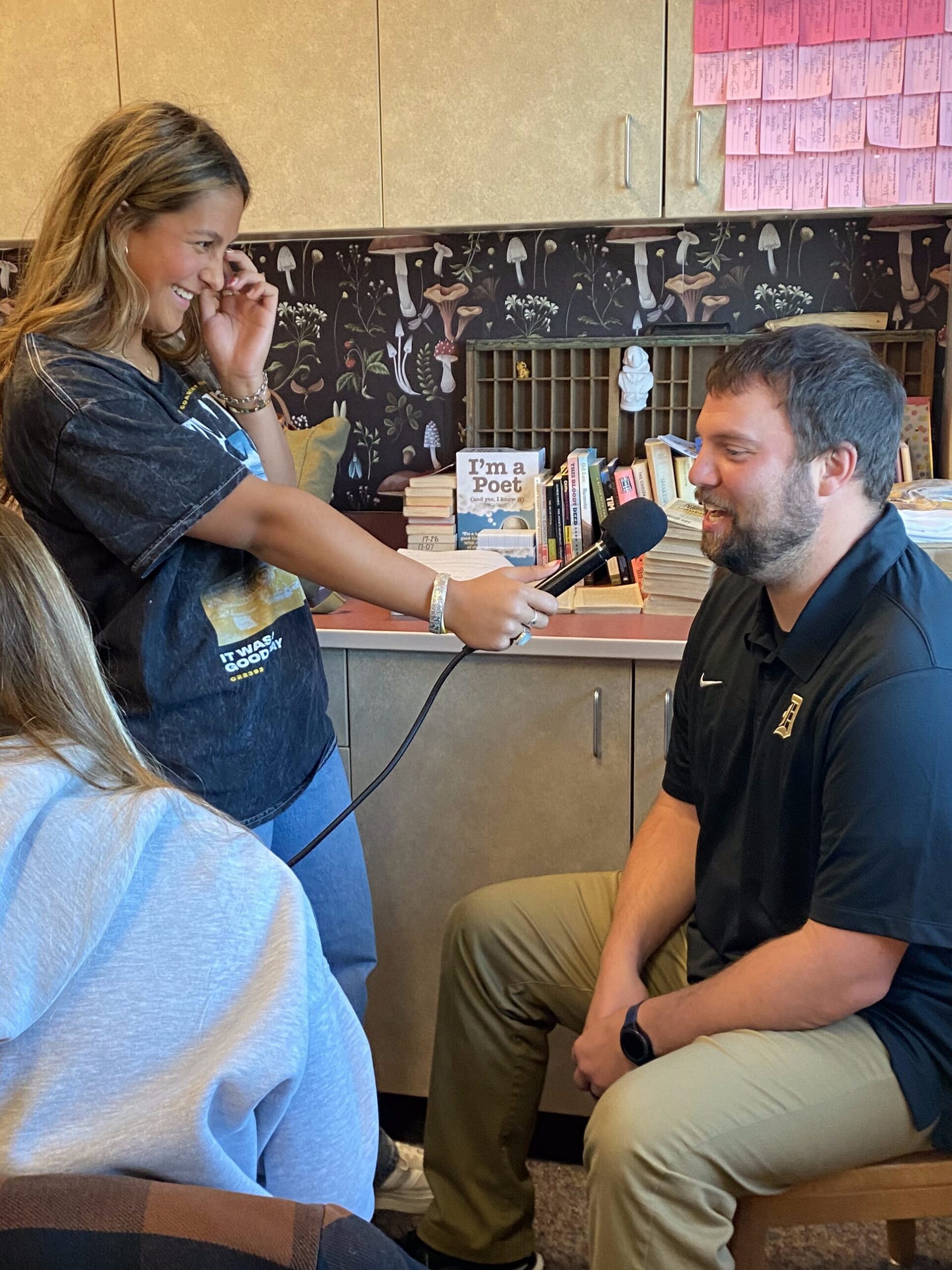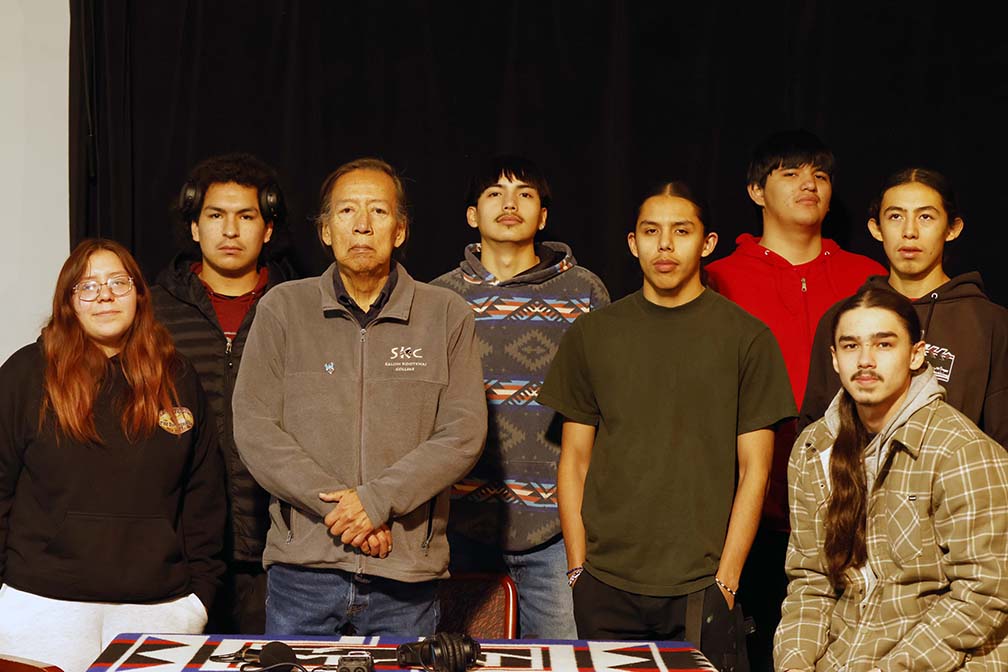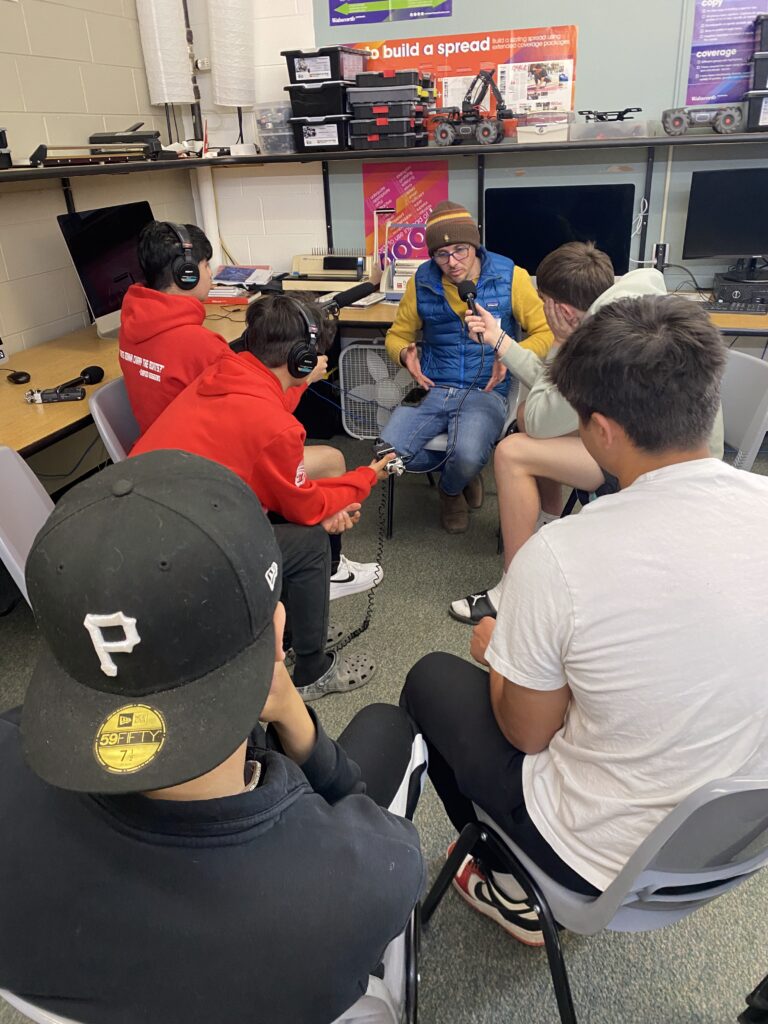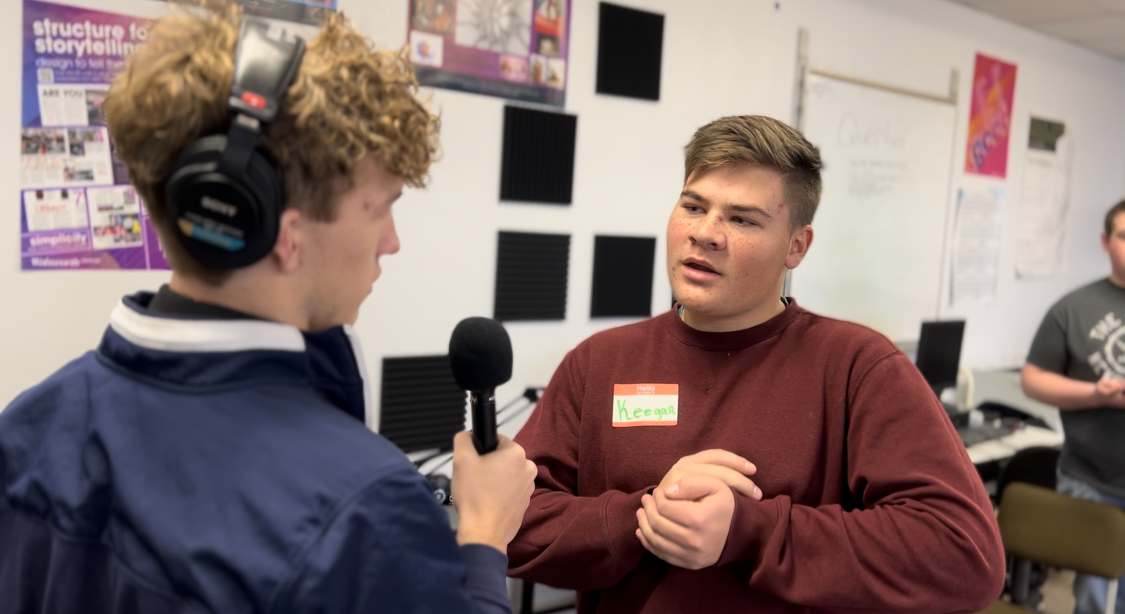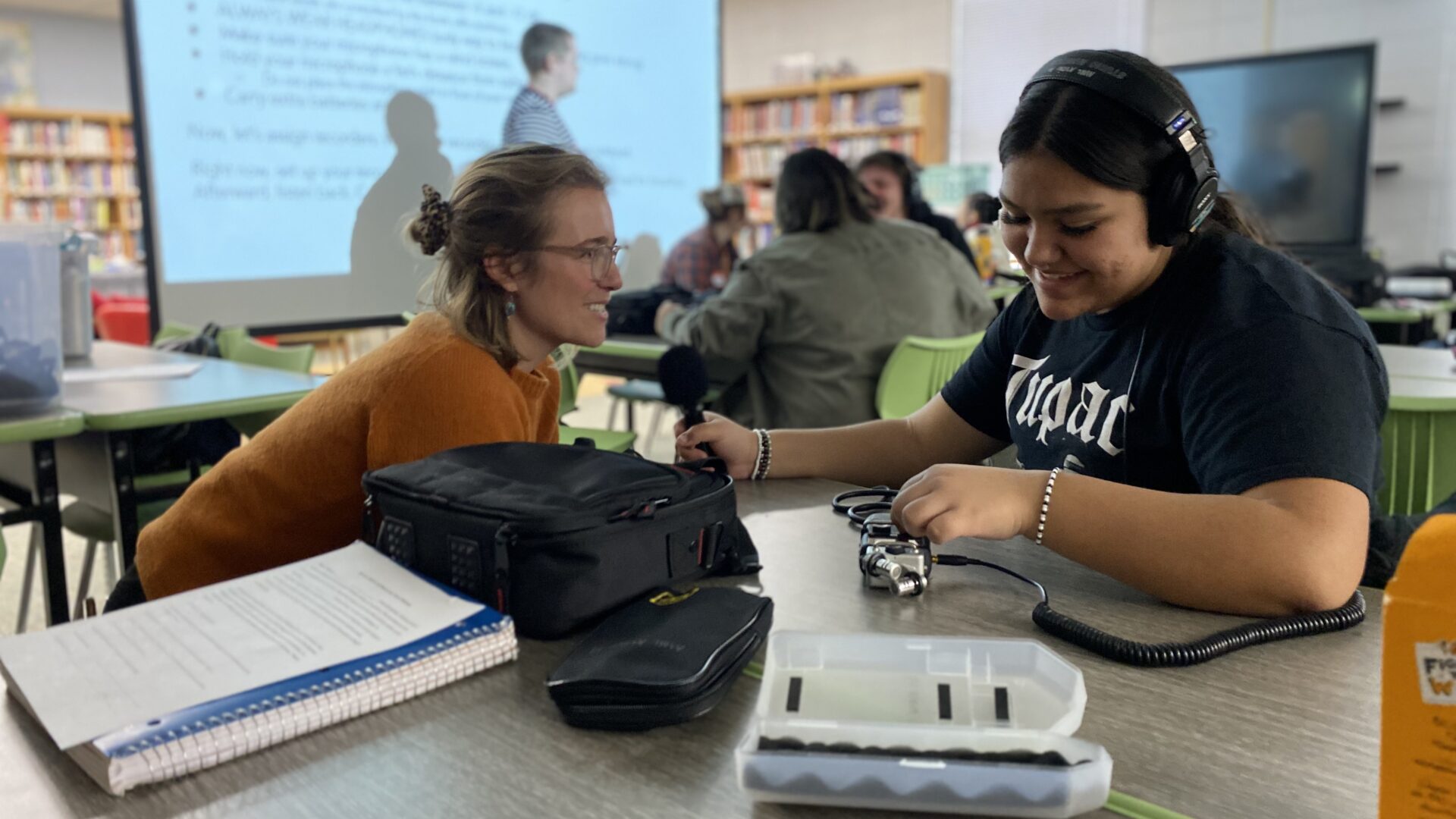What does the buffalo mean to the Nakoda and Dakota people of Eastern Montana? That’s the question students in Poplar set out to answer during a hands-on cultural education week. The Montana Media Lab was lucky enough to join them and help the students make an audio story about the experience. Students learned journalism and audio reporting basics, and then dove into interviewing community members about their relationship with the buffalo.
The Montana Media Lab’s Youth Voices Program visited the Fort Peck Reservation during the week of the Buffalo Unity Project. Educators at Poplar Middle School lead the project, intended to connect young people to tribal cultural practices. In reporting on the project, students explored how the Fort Peck community teaches the next generation about their cultural lifeways tied to the buffalo, which once roamed by the millions on their aboriginal lands of the Great Plains.

For Poplar seventh graders, the Buffalo Unity Project’s main event is the buffalo hunt. On the windy October morning of the hunt, 60 students arrived at the tribally-owned buffalo ranch at 9 a.m. sharp. They held microphones and cameras, ready to document their experience and share it. The kids were clad in their bright yellow Buffalo Unity Project shirts, and their anticipation was palpable. As they piled off the bus, excited chatter about the buffalo hunt filled the air.
Herds of buffalo galloped in the distance, while leaders of the Buffalo Unity Project guided the students through teachings about the native mammal and its deep spiritual and cultural significance to the Nakoda and Dakota people. First on the agenda was a pipe ceremony, where each student cleansed themselves in sage and listened intently to the prayers and drum ceremony that is customary for the buffalo hunt. Next, they waited for Reyna Perez, their assistant principal and the chosen person to shoot the buffalo, to return.
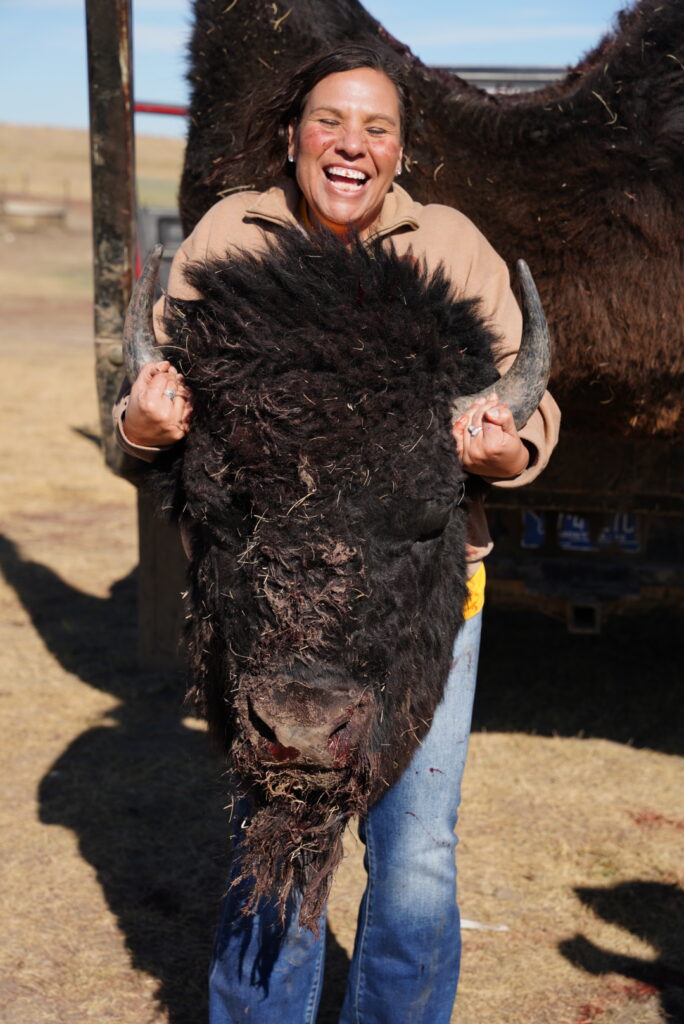
When the truck crested the prairie hill, it was clear that Mrs. Perez had been successful. The students crowded around to fist-bump her and witness the buffalo up close. Students practiced skills they used during the Youth Voices workshop to record that celebration, and the processing of the buffalo. Those recordings will give the listeners of their final audio story a sense of what it was like to witness a buffalo hunt.
The students watched in rapture as the large bull was taken down and processed by ranch owner Robbie Magnan. Magnan explained the different body parts and their uses for food, clothing, and regalia. No part of the buffalo goes to waste. The buffalo’s liver is believed to signify strength, and Magnan said those who ate it would receive some of that strength. Some students took bites of the organ.

By the end of the day, the students had gathered all kinds of sounds, interviews, and photos that would help others understand the meaningful experience of witnessing the buffalo hunt—and how the hunt connected them to their heritage. The students’ reporting captured part of the Fort Peck Reservation tribes’ relationships to the land, the buffalo, and one another. Along the way, they contributed to documenting the ongoing story of the Nakoda and Dakota people and sharing it with the world.
